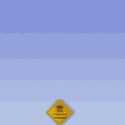
This small, picturesque hill station makes for a restful overnight pitstop on the journey east from Madiun to Solo. The town occupies the southern slope of central Java’s Mount Lawu at an elevation of 1,287 meters, the ponderous and foreboding shape of the mammoth but inactive volcano looming above the town. Cabbages, onions, sweet potato and every other imaginable European vegetable grow on terraces to either side of the steep road leading up to the resort town. Climbing steadily higher, the road suddenly comes upon a small and placid crater lake. If arriving by night in the cool damp air, shadowy figures roam the streets and huddle in warung kopi. These are the friendly mountain people of Sarangan who are used to a steady stream of visitors seeking relief from the sun-cracked lowlands of east Java. They invite newcomers to stay in one of the 27-plus guesthouses and hotels that cluster along the lake’s shore. Their approach is soft-sell, as is the horsemen who hire out their ponies. Java’s mountains always come with ponies. Not many budget-minded travelers make it up here, mostly domestic daytrippers on tour buses from Madiun 40 kilometers away, and in the European tourist season when all the prices double a few elderly Dutch embark on the pilgrimage for nostalgia’s sake. The place has been included in travelogues since H.W. Ponder wrote wistfully of Sarangan in her impressionistic Java Pageant published in the early ‘30s. Sarangan is also popular with holiday makers from as far away as Surabaya and Solo, serving as a refreshing sidetrip after taking in the 15 century temples of Candi Sukuh and Candi Ceto, just 10 kilometers distant on the other side of the mountain. The whole surrounding area still has a primordial feel to it. Since colonial times, Sarangan has been popular for boating, waterskiing and fishing. Speedboats can circle this small body of water in 10 minutes flat, and by horseback it takes only 25 minutes. A motor road extends three-quarters around the lake. From the opposite shore, a path leads to a sylvan waterfall. The more ambitious climb the heavily forested slopes of Mount Lawu (3,265 meters), an ancient, eroded volcano that has retained its symmetrical shape but is usually wrapped in clouds. The twisting mountain road west up to the pass is so steep that many cars and buses can't make it over the top. Some older dilapidated vehicles have to let half the passengers off at every other bend. The trail to the top is used by local people, some of whom make pilgrimages to the Hindu-Buddhist temple near the summit to place offerings. On the way are remnants of old temples, terracing and Majapahit graves. It's also feasible to spend the night in shelters so you can catch the sunrise. Guides are available for hire at Blumbang village near the pass, halfway between Tawangmangu and Sarangan. The trail, however, is well marked, and a guide is only necessary if you intend to overnight and need proper equipment. To reach the peak of Mount Lawu takes 5 hours; to the crater (Kawah Lawu) only 3 hours, but the climb is a breeze, easier than Jogya’s Merapi. The climb begins 300 meters northwest of Cemoro Sewu (5 kilometers from Sarangan, 7 km from Tawangmangu) where you'll see several radio/TV towers. Just beyond the bridge, near Pos 1, is the start of the constructed, heavily used trail. Water is available at several points as the trail winds up the mountain. The final ascent is actually from the northeast, with several huts on the way: at 2,400 meters, 2,850 meters and 3,100 meters. The rainiest season is Nov.-May, but the hike is possible year round. During the full moon, it's even possible to make the dramatic, spooky climb up and back in one day. You leave Sarangan at 4 a.m. in frigid temperatures, reach the peak at 9 a.m. From the top, superlative views of Merapi and Willis and not a plane in sight. Scores of others will also be making the two-hour descent, so you won’t get lost. Just follow the people, the trash and the sound of radios back down.
















